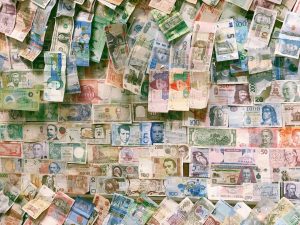The foreign exchange market, also known as the forex market, is the largest and most liquid financial market in the world, with an average daily turnover of over $5 trillion. It is a decentralized market where currencies are traded, with buyers and sellers from all over the world coming together to exchange currencies at fluctuating prices. The forex market is influenced by a variety of factors, both economic and non-economic, that cause prices to move.
Economic Factors
Economic factors are the primary drivers of forex prices. These factors are related to the performance of economies and the monetary policies of central banks. Some of the most important economic factors that influence forex prices include:
1. Interest rates: Interest rates are set by central banks to control inflation and the overall economy. Higher interest rates attract foreign investment, which increases demand for the currency and pushes up its value. On the other hand, lower interest rates make a currency less attractive, leading to a decrease in demand and a drop in value.
2. Inflation: Inflation is the rate at which prices of goods and services increase over time. A high rate of inflation can lead to a decrease in the value of a currency, as it reduces the purchasing power of that currency. Central banks may increase interest rates to combat inflation, which could strengthen the currency.
3. Gross Domestic Product (GDP): GDP is the measure of the economic output of a country. A strong GDP growth rate is usually positive for a currency, as it indicates a healthy economy. Conversely, a weak GDP growth rate can negatively impact a currency.
4. Trade Balance: The trade balance is the difference between a country’s exports and imports. A positive trade balance, where exports exceed imports, can strengthen a currency, while a negative trade balance can weaken it.
5. Political Stability: Political stability is an important factor in determining the value of a currency. A country with a stable political system is more likely to attract foreign investment, which can strengthen its currency.
Non-Economic Factors
Non-economic factors may also influence forex prices. These factors are typically related to social and political events, which can impact investor sentiment and ultimately drive currency prices. Some of the most important non-economic factors that influence forex prices include:
1. Geopolitical Events: Geopolitical events such as wars, acts of terrorism, and political instability can cause currency prices to fluctuate. These events can create uncertainty and increase risk, leading investors to sell off currencies perceived as risky.
2. Natural Disasters: Natural disasters such as hurricanes, earthquakes, and floods can also impact currency prices. These events can disrupt economic activity and cause investors to move their funds out of affected countries.
3. Speculation: Speculation is the act of buying or selling currencies based on expectations of future price movements. Speculators may trade on rumors, news, or other factors that they believe will impact currency prices.
4. Technical Analysis: Technical analysis involves using charts and other tools to analyze past price movements and identify trends. Technical traders may use this information to make trading decisions and predict future price movements.
Conclusion
Forex prices are influenced by a variety of factors, both economic and non-economic. Economic factors, such as interest rates, inflation, GDP, trade balance, and political stability, are the primary drivers of currency prices. Non-economic factors, such as geopolitical events, natural disasters, speculation, and technical analysis, can also impact currency prices. Understanding these factors is essential to making informed trading decisions in the forex market.






